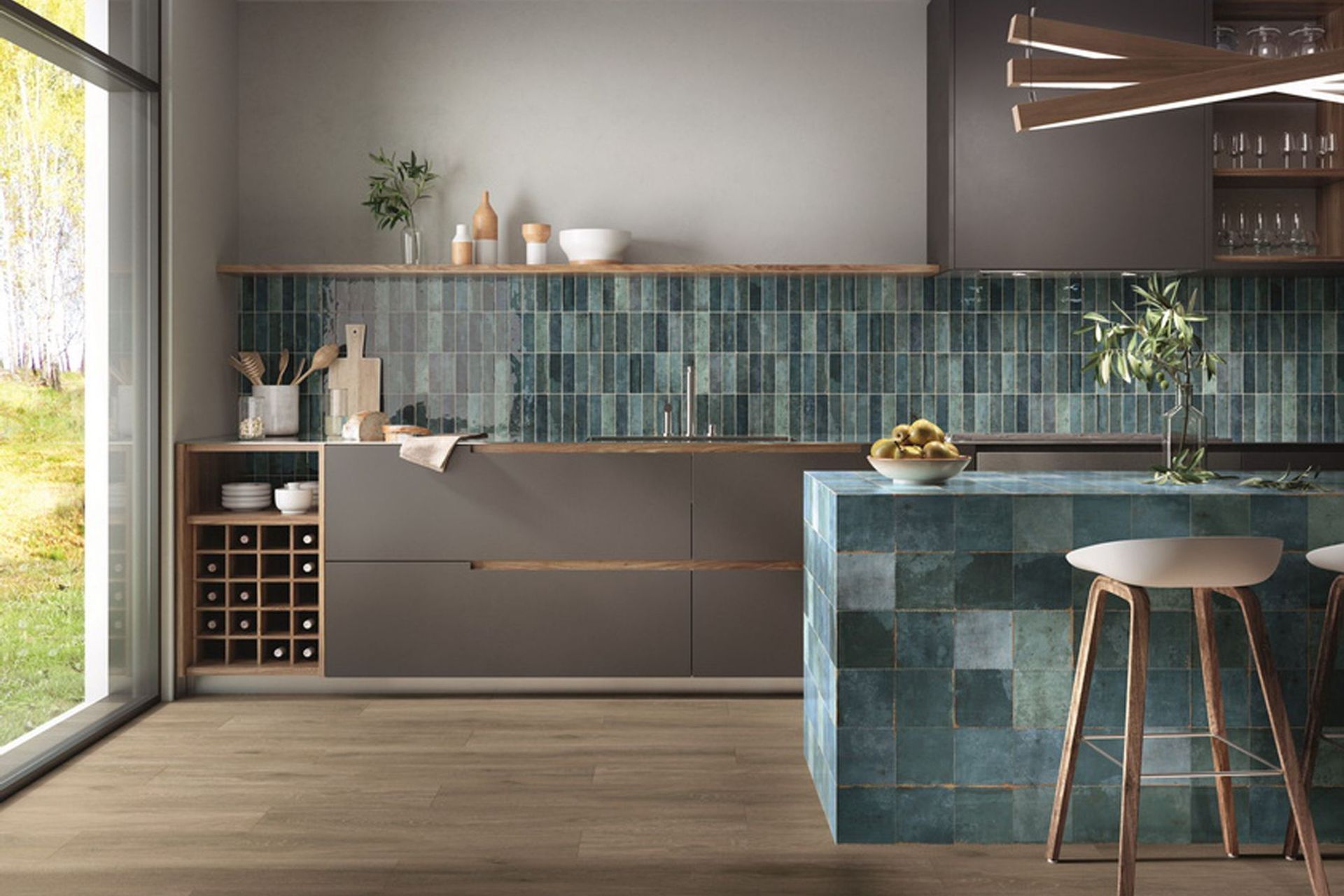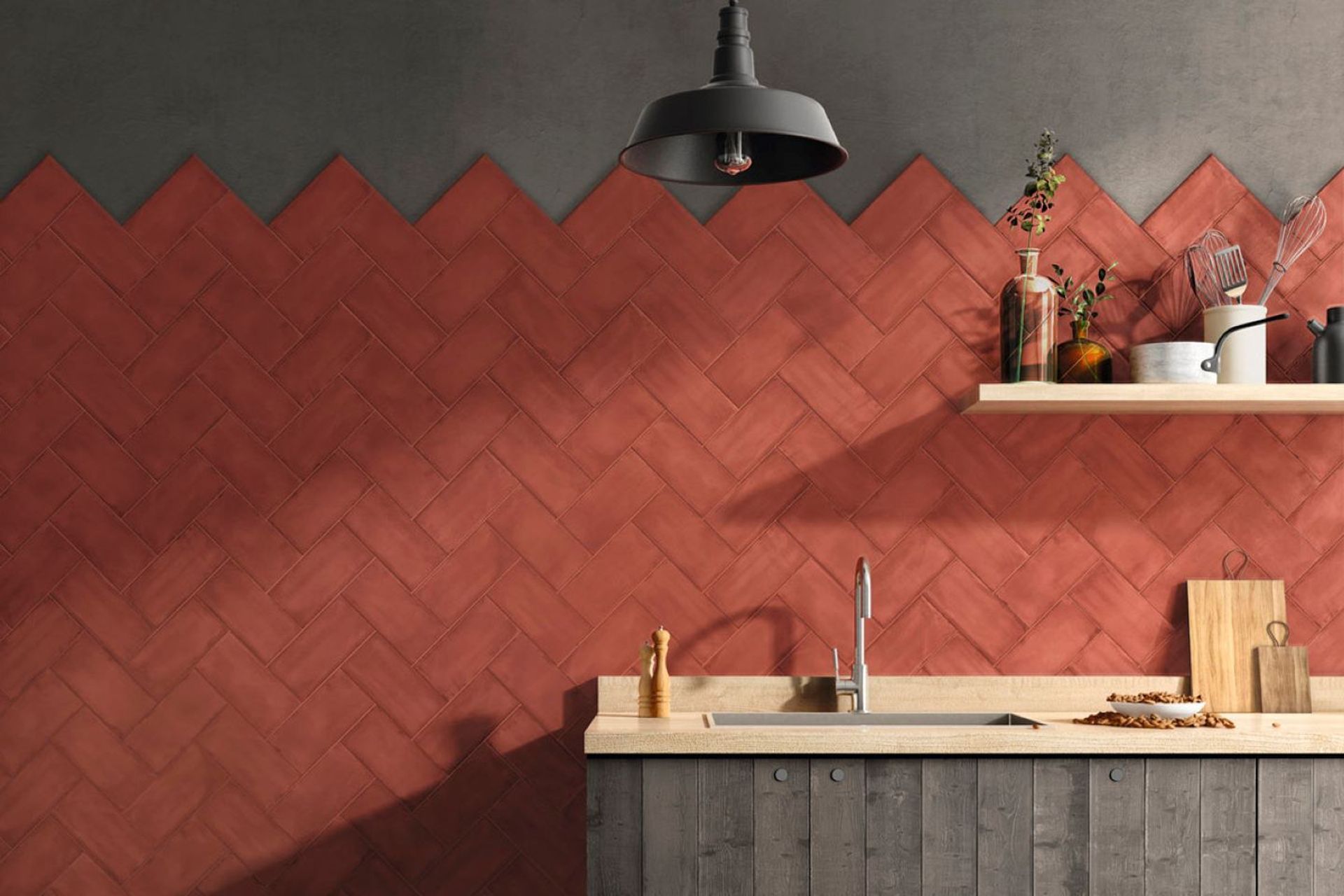How to choose kitchen wall tiles that look great and last
Written by
19 July 2023
•
11 min read
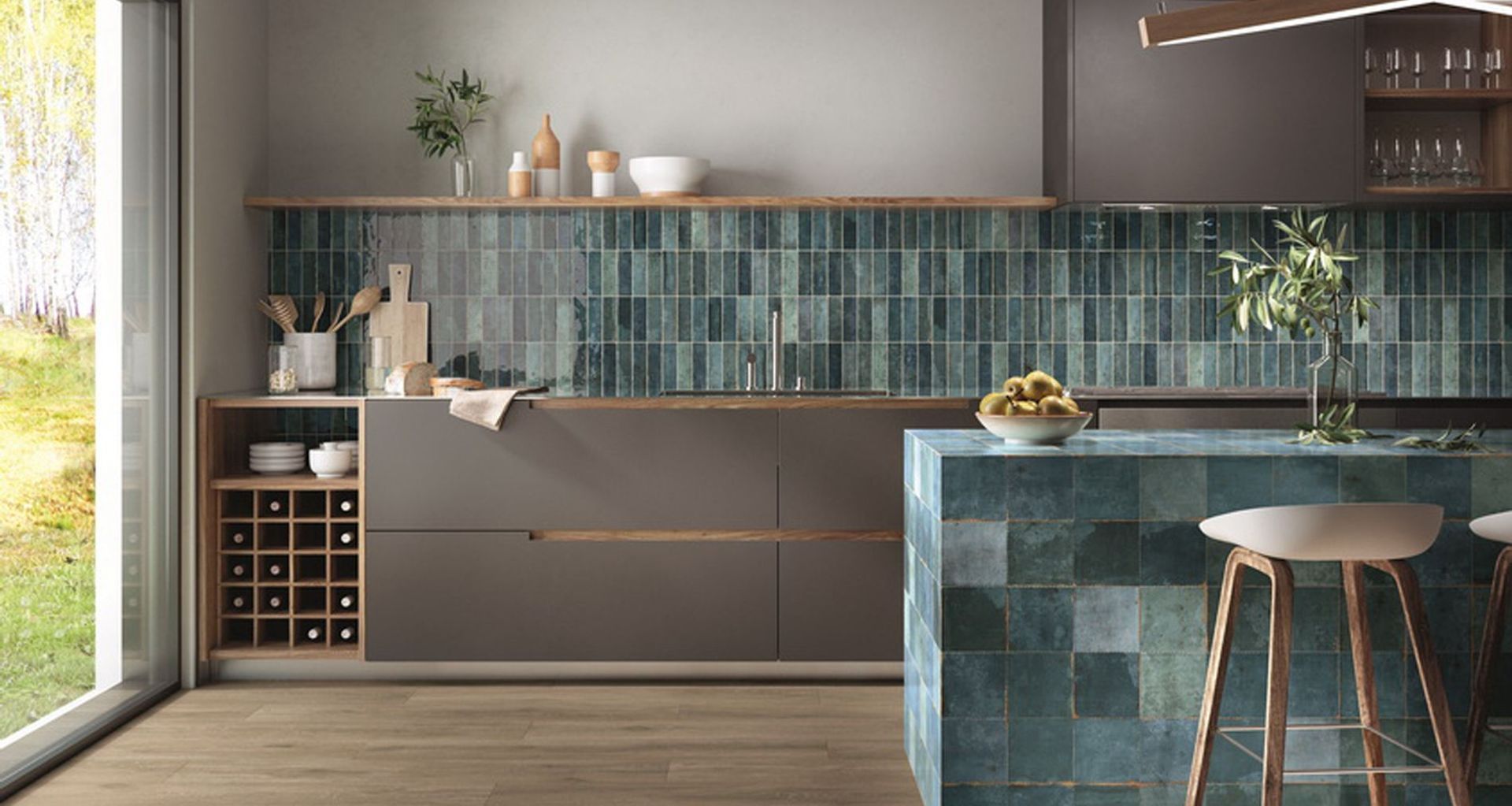
If you are going to invest in kitchen wall tiles, which can be a bit more costly than other types of wall coverings, you want to be sure you pick the best ones for the job. This doesn’t necessarily mean picking the most expensive options you can afford but thinking carefully about the characteristics of your space and the things you need to prioritise.
1. Consider the size and layout of your kitchen
One of the first things to do at the start of this process is to think about the size and layout of your kitchen. Funnily enough, this step is often missed altogether but is incredibly important for the overall impact of your final choice. There are some simple tips you can follow depending on the type of kitchen that you have which can help point you in the right direction.
Small kitchens
Space is obviously a key concern for small kitchens so options that help accentuate spaciousness are good ones to consider. Light-coloured tiles or a wall tile with a reflective or glossy finish will help keep things bright and airy.
Large kitchens
Larger-sized tiles naturally suit bigger kitchens giving them a more balanced aesthetic. This will mean fewer grout lines and more focus on the tiles themselves which can be stylistically more expressive if you wish.
Open plan kitchens
Open plan kitchens are very common in New Zealand and have different traits to think about. As a space that includes cooking, dining and living areas your wall tile choice has to work with all of these instead of just the kitchen in isolation. Textured tiles can be an interesting choice here as they can help create depth, accentuating the openness of the entire space.
Galley kitchens
Galley kitchens are long and narrow and similarly shaped tiles, like subway tiles, will help you achieve a consistent theme and feel. Neutral coloured wall tiles will also open the space up without it feeling too confined.
U-shaped and L-shaped kitchens
U-shaped and L-shaped kitchens present a great opportunity to create a feature wall of tiles between the two side walls of a U-shaped kitchen or the shorter side of an L-shaped kitchen. The styling choice of the feature wall is completely up to you, which means you can go for something that speaks to your personality and preferences.
Related article: A guide to selecting the right tile size for your floors
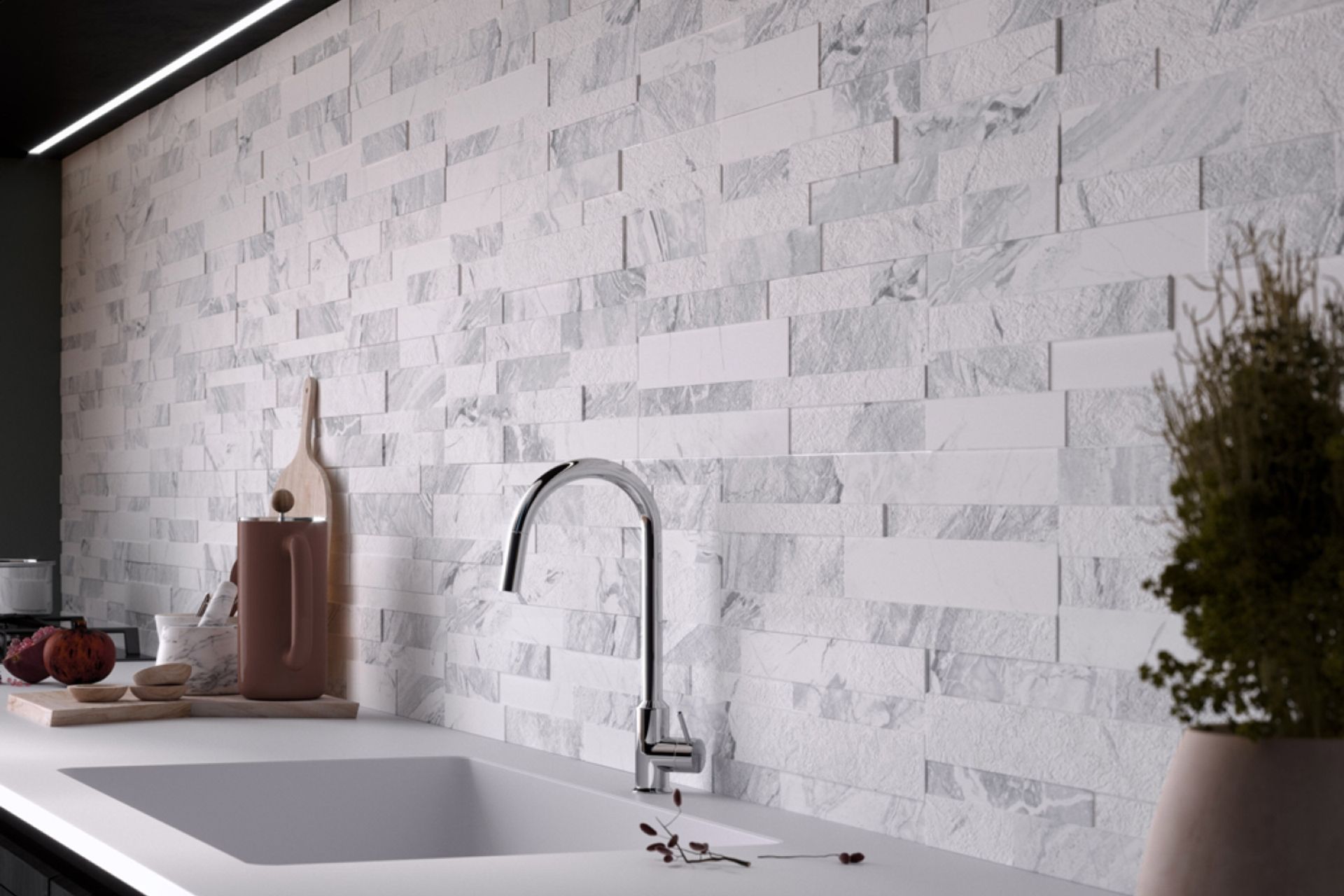
2. Look closely at the type of tile material you want to use
The type of kitchen wall tiles you choose with respect to materials is another big factor that can impact its appearance, durability and the amount of ongoing maintenance required. The main types are all widely used with different characteristics, applicable for different situations — all of which are great to know before making your final choice.
Ceramic tiles
A ceramic tile is a strong choice for the kitchen as they are non-porous making them resistant to water and staining. They also won’t harbour bacteria or allergens, are heat-resistant, eco-friendly and readily available in a wide range of styles.
Glass tiles
Glass tiles are an elegant choice, typically available in a range of eye-catching designs that can make them quite a nice option for a decorative tile. Their reflective surfaces allow them to bounce and enhance the natural light in a space making it feel more bright and airy. Incredibly versatile, they also don’t fade over time.
Porcelain tiles
Porcelain tiles are another excellent option with a very low absorption rate making them ideal for environments like the kitchen and bathroom. Because they are made from refined clay and fired at extremely high temperatures, they are very durable with tremendous longevity. The porcelain tile is also resistant to most chemicals which are found in cleaning products.
Stone tiles
Natural stone tiles are probably the most exotic of the ones mentioned here that appeal because of their unique natural beauty. The presence of natural stone can be quite relaxing, a nice trait to be able to bring into the kitchen environment. Their strength often sees them used as kitchen floor tiles but they work just as well on walls and have a textural aspect that can really elevate its appearance, adding to a home’s resale value.
Related article: The pros and cons of ceramic tile flooring for the modern home
3. Think about your approach to colour
Much of what has already been discussed will naturally lead you to think about tile colour. Again, it’s an important aspect to think about carefully given the visual impact it’ll have in a space and there are a few different ways to approach this.
Consider the colour scheme of your kitchen
The most obvious place to start is the overall colour scheme of your kitchen. Picking something that will complement this, be it a neutral or a contrasting colour, will make it easier on the eyes.
Look at the lighting and space
The decision about lighter or darker colours may come down to lighting and space. Smaller, darker spaces tend to be enhanced by lighter colours, adding a feeling of spaciousness. On the other hand, darker colours in a large and bright space can bring comfort and cosiness when chosen well.
Coordinate with your cabinets and countertops
This blends into the first point but is worth discussing specifically as your cabinets and countertops share so much of the metaphorical canvas of the kitchen as your wall tiles will. How they work together is crucial to a harmonious design, again using the same principles of choosing complementary colours.
Your personal preferences and current trends
Your personal preference for colours as well as the latest trends for kitchen styling are also sound ways to think about colour. Choosing trending colours will help you achieve a contemporary look which will make your space feel fresh and inviting. In terms of personal preferences, you should also accept that at the end of the day, you’ll spend more time in your kitchen than anyone else so it's fair to prioritise your own tastes too.
Related article: Superb outdoor tile design ideas for New Zealand homes
4. Don't forget about the texture, grouting, shape, size and patterns
While colour is a hugely important factor in terms of aesthetics, there are other aspects that should also be looked at. This includes the texture of a tile, the grouting, its shape, size and patterns — all of which can dramatically impact its look and feel.
Texture and grouting
Different tile finishes bring different textural qualities to a kitchen. Glossy tiles are good for those that like a sheen with soft highlights while matt tiles can add depth and dimension to a space. Grouting itself has a tactile quality to it and you’ll need to decide how much of it you want to show, opting for narrow, standard or wide grout lines. These days, you can also choose the colour of your grouting with more and more homeowners taking the opportunity to use contrasting grout, for example, dark grout against light tiles, for visual impact.
Shape and size
Sizing has already been covered in other sections fairly comprehensively with a balanced approach being the most appropriate (though there are always exceptions). However, tile shape has not and there are more options here than you might think. Besides square and rectangular shapes you’ll also find circle, triangle, diamond, hexagonal, rhombus, scalloped, mosaic tiles and more. It takes a certain amount of interior design skill to pull some of these off but they can be dazzling and a whole lot of fun.
Patterns and designs
You’ll also find patterned tiles like encaustic tiles that you can use which can create a real point of difference for your space. Depending on the design, you can really create a sophisticated feeling which is at the same time more personal to you and welcoming to others.
5. Care and maintenance shouldn't be underestimated
When choosing kitchen tiles, you’ll want to pick ones that will last, ideally with as little upkeep as possible. In modern life, time is extremely precious and the less of it you spend on cleaning and repairs, the better. There are a few things to look out for which will influence how much ongoing maintenance will be required.
Water resistance and sealing
The water resistance level of a tile and the amount of sealing (and regularity of it) required should definitely be one of the first things addressed, especially if it’s for an area of the kitchen prone to moisture and splashing. This can have a big impact on longevity so should be prioritised.
Cleaning and stain resistance
All tiles will need to be cleaned at some point so the question is more about how easy it will be to do so. The tile’s chemical resistance is important here as some might require specific cleaners which could be expensive or hard to find. The stain resistance qualities are also key as those that are prone to staining will require more elbow grease to restore.
Durability and longevity
Tiling can be a costly business (more on this next) so you really want to pick an option that will deliver in both the short and long term. The more durable the tile, the better, especially if it is an area that could be knocked around in the day-to-day activity of your kitchen. It also pays to understand how long a tile’s lifespan is so you can set your expectations from the beginning and plan accordingly.
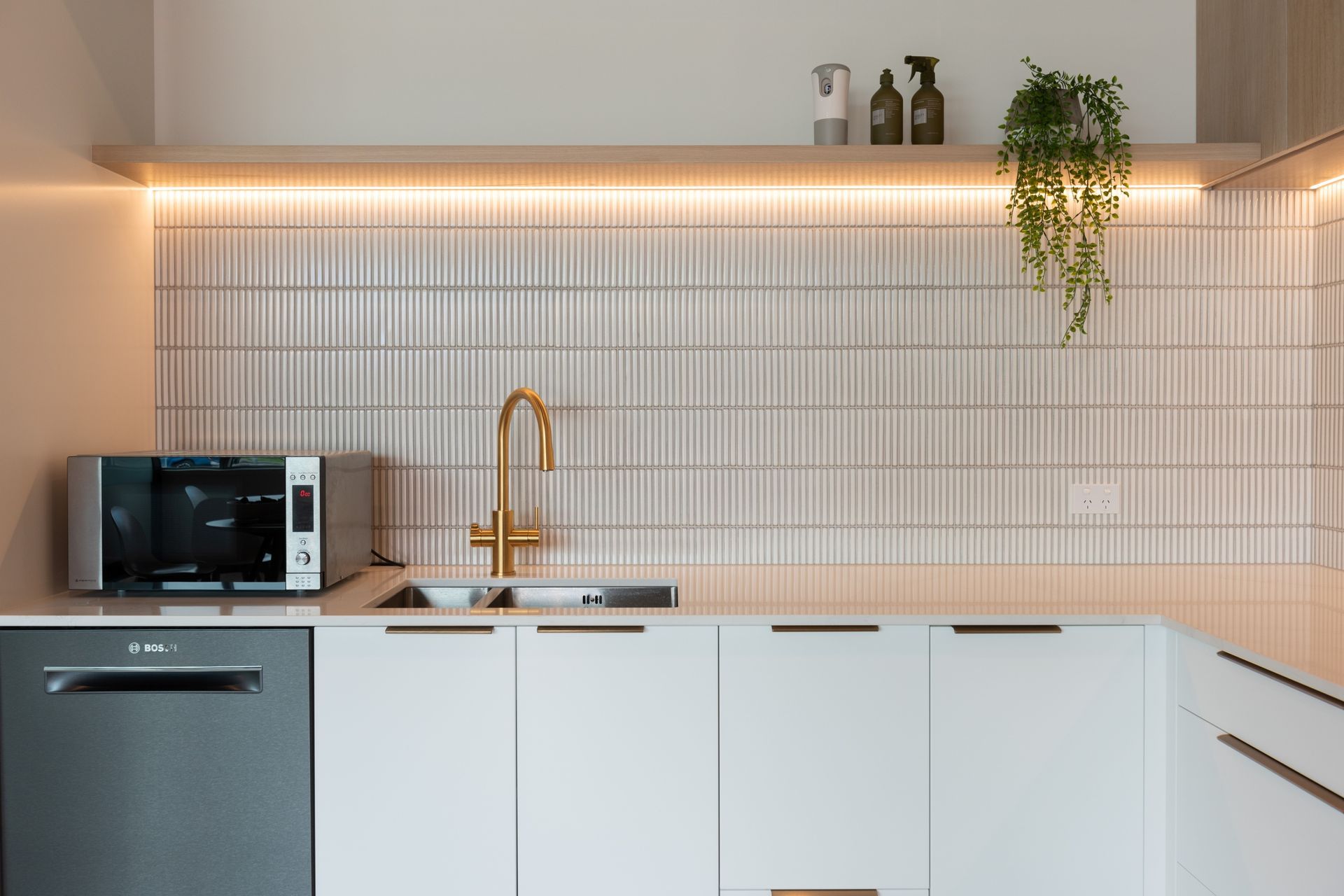
6. Neither should your budget
Planning your budget carefully is crucial when it comes to tiles and this includes the cost of the tiles themselves (plus materials) as well as the installation. Getting quotes is key but having a general idea even before doing this can help with your budgeting well in advance.
The cost of tiles
The price of individual tiles can vary widely depending on their type, size, brand, design etc and could fall anywhere between $20-$150 per square metre. You’ll also need to set aside a bit of budget for adhesives, grout and tools if you’re planning to DIY.
Professional tiling costs
Different tilers will charge their services in different ways so it pays to confirm this with a quote before any work is undertaken. Some will charge per square metre of work which can range from $200 - $500 per square metre. Others will charge per hour which generally comes to $45 - $150 per hour depending on the experience of the tiler. Some tiling companies may charge more per hour but they'll send two tilers for the job instead of one, completing the job quicker in the process. Others will provide a quote for the entire project which will vary depending on the complexity. If the area you want tiled needs old tiles removed first, you’ll need to account for this in your budget too. In summary, comparing quotes from different professionals is essential before agreeing to anything.
Lifetime costs
When thinking about costs it’s important to take into account the lifetime costs where two factors have to be considered. The first is the initial purchasing and installation costs as well as any ongoing maintenance for cleaning and ad-hoc repairs. The other is the overall lifespan of the product to get a full idea of the return on investment. For example, one option might cost you more in the upfront costs but if that lasts twice as long in terms of its lifespan, then that may represent better overall value.
Everything you need to know to choose kitchen wall tiles
As you can see, there’s quite a bit to think about when it comes to choosing the best wall tiles for your kitchen but it can be easily done when following these simple steps. Try to give yourself plenty of time to shop around and get quotes before making your decision. That way you'll have peace of mind knowing you’ve covered your bases and picked something you’ll be able to enjoy for many years to come.
(This article was updated on the 4th December 2024)
Explore an extensive range of high-quality wall tiles for your kitchen on ArchiPro

